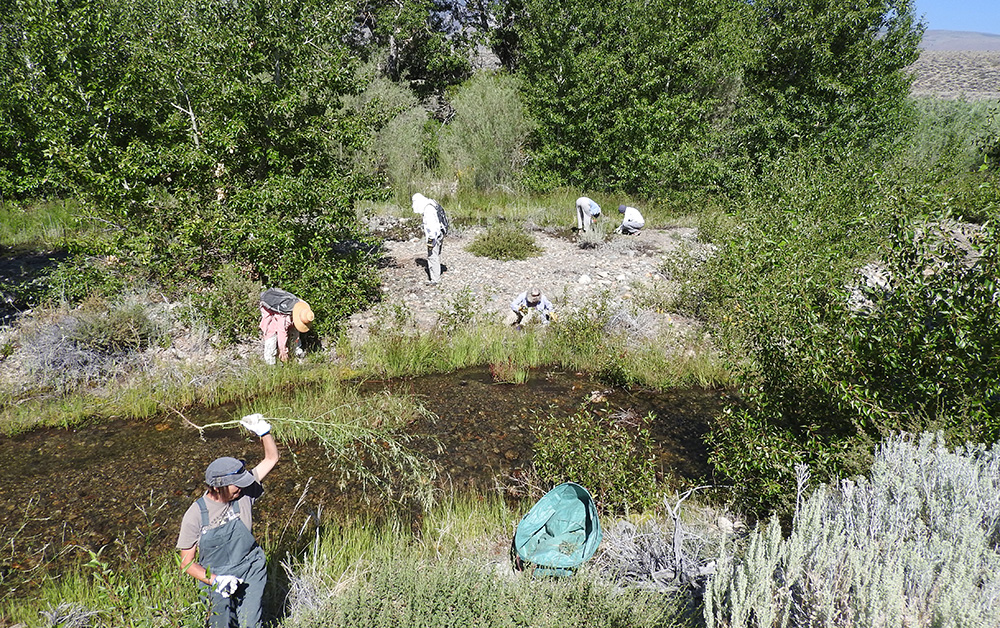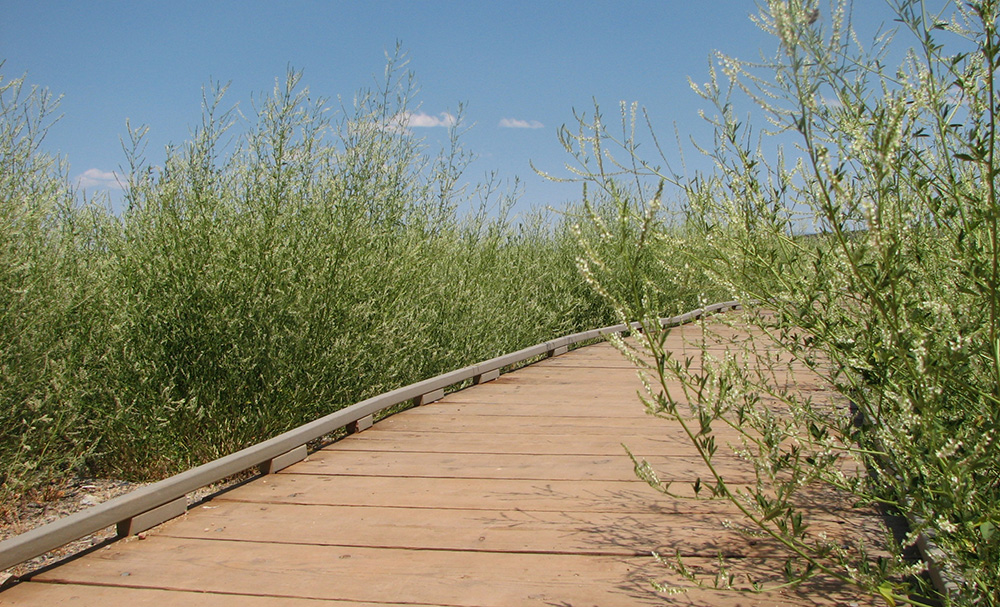
This post was written by Anna Boyes, 2018 Mono Lake Intern.
One of the important goals of the Mono Lake Committee is restoration, and one thing we do to restore the area is removing invasive plants. And you can help too!

We’re hosting several mornings of invasive plant removals this summer. To start them off, we are lucky to be joined by two guest naturalists: Joe Woods and Ann Howald.
Saturday, July 28, 8:00–11:00am
with invasive plant removal specialist Joe Woods
Wednesday, August 8, 8:00–11:00am
with botanist Ann Howald
Joe has a background in invasive plant removal, and has helped with many removal events in the past. Ann is a retired consulting botanist who focuses on rare plant surveys and conservation issues, and leads Field Seminars for the Committee every summer about high country plants. This is a great opportunity to learn something new from well-versed experts and to make a difference at Mono Lake in a tangible way!
Removing invasive species like white sweet clover can provide room for native plants to grow. Our Outdoor Education Center program has been instrumental in this process, helping us remove hundreds of pounds of sweet clover every year. Each plant can produce up to 350,000 seeds, allowing white sweet clover to spread very quickly. However, hand-pulling these plants before the seeds set can stop the clover from spreading.
For each event, meet at the Mono Lake Committee Information Center & Bookstore at 8:00am and we’ll carpool to Old Marina to begin the removal. Afterwards we’ll celebrate our hard work with a FREE picnic lunch! If you’ve been looking for a hands-on way to contribute to the community, here’s your chance. Remember to bring sunscreen, water, closed-toed shoes, a hat, and a snack. If you are planning on attending, please RSVP to me by email if possible.

